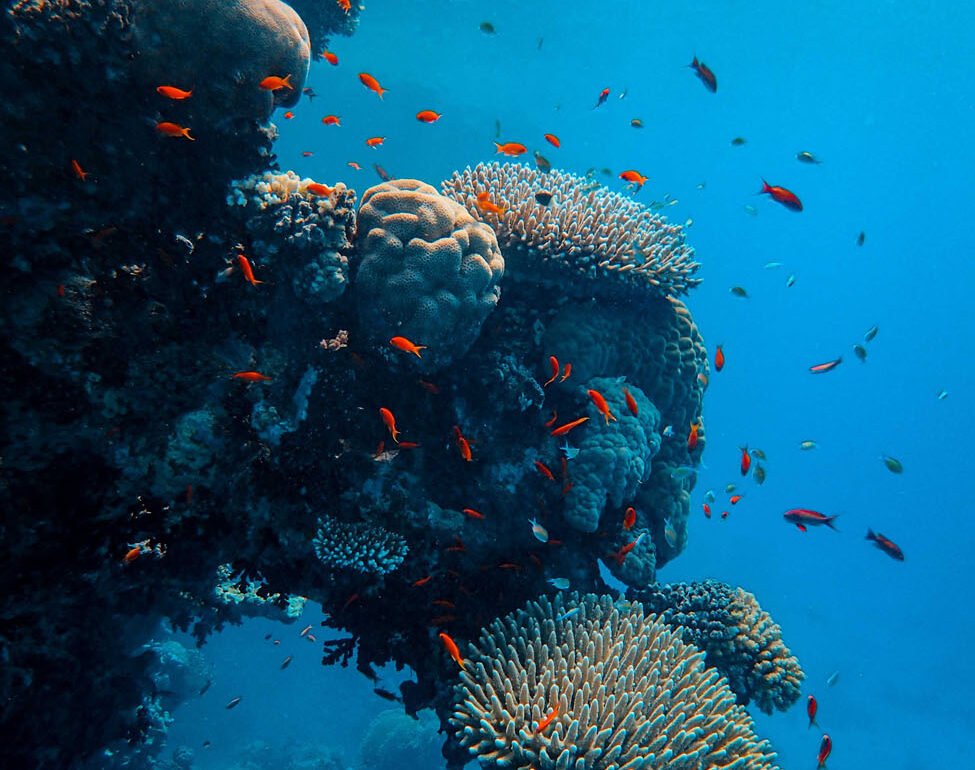Aquariums capture the creatures of the sea bringing us glimpses of an alien habitat. The oceans and sea hold a fascination for us. [Click Here for Underwater Sounds] To be on a beach and watch the waves roll in pounding the surf as they have for countless millennia can induce a reflective state of mind. Is this fascination with the sea some kind of yearning for the home of our primeval origins? Does it have to do with the fact that for the first nine months we live surrounded by the water of the intrauterine sea? We let grains of sand slip through the fingers and reflect on the passage of time and our beginning and our end.
Likewise what swims beneath the surface of the seas also fascinates, intrigues, amazes and frightens. A metaphor for the mind, its surface and its depths, both its beauty and its horror, the sea and its creatures exert a strong pull on the imagination.
The ancient Sumerians were among the first peoples to keep fish or other marine animals in tanks and this was over 4500 years ago. The Assyrians, Chinese, and ancient Egyptians also kept fish in ponds. The Romans had elaborate gardens and constructed ponds in which to keep fish to both watch them and fatten them. Cortes, the Spanish conqueror of the Aztecs, describes the beautiful pleasure garden of an noble in which there was a man-made fish pond with many different fish and wildfowl.
The first modern aquarium dates from the middle of the nineteenth century and was built in the London Zoological Gardens. Many other European cities subsequently built them.
The first oceanarium, Marineland, opened in Florida in 1938 and since then many large public aquariums have been opened throughout the world both for the education and entertainment of the public and as research institutes.
The denizens of the deep are, if not tamed, safe behind the glass where we can admire their beauty, speed, and ferocity. Here Nature is controlled and our anxieties about what lurks beneath the surface held in check.
by Michael Sones















